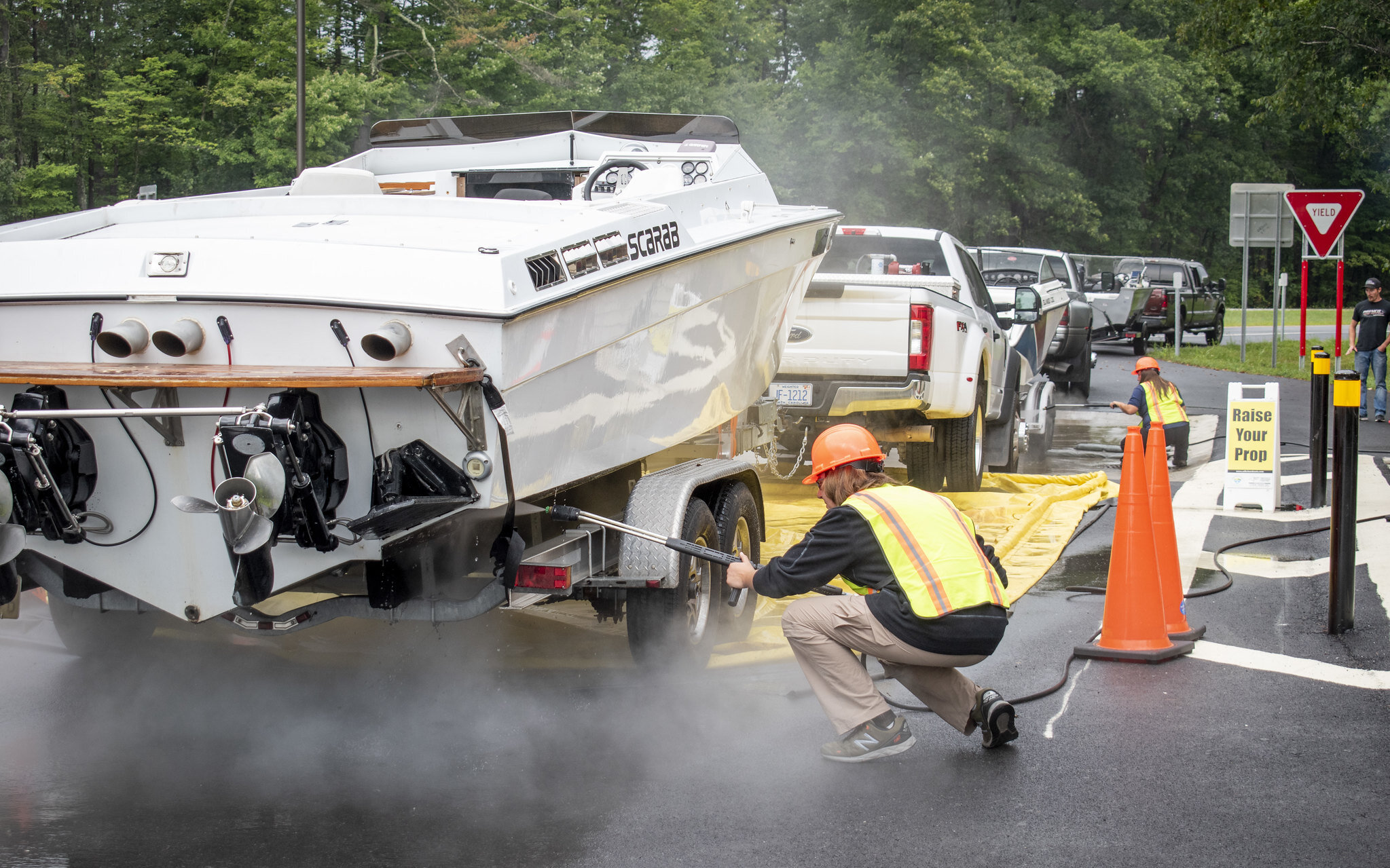
Stewardship
The Adirondack Region is home to globally significant wetlands, over 3,000 lakes and ponds, and an estimated 30,000 miles of rivers and streams. With an abundance of high-quality water resources comparatively uninvaded by the scores of invasive species in other state waters, the Adirondacks present a crucial opportunity for stewardship and aquatic invasive species (AIS) prevention. The Park protects almost six million acres of forests, mountains, and waterways, attracting nearly 10 million visitors and seasonal residents annually. Most prominent among the many attractions of the region are its opportunities in snow-free months for aquatic recreation, including boating, swimming, camping, and fishing.
Non-native aquatic plants, animals, and microorganisms are serious threats to the lakes, rivers, and streams of the Adirondack Park. These organisms are distributed outside of their original range primarily through human activities and can become invasive in their new environments. A species is considered "invasive" when it is introduced to an ecosystem and causes harm to the economy, environment, and/or human health. It is estimated that aquatic invasive species (AIS) cost economies over a billion dollars per year.
AWI became involved in AIS management in 1999 with the start of a management program on Upper Saranac Lake, followed the next year by the first-ever Watercraft Inspection Steward Program in New York State at the Upper St. Regis boat launch. As public awareness and concern about invasive species grew, the Watercraft Inspection Steward Program gained momentum to the point where it’s one of the largest AIS spread prevention programs in the United States.
Foundational to AWI’s invasive species work is the Adirondack Park Aquatic Nuisance Species Management Plan (the Plan). AWI participated with 11 other organizations to develop the Plan in 2005 which was later adopted by the Adirondack Park Agency and endorsed by local governments with the following three goals: (1) prevent new AIS from entering the Park, (2) limit the spread of AIS already established in the Park, and (3) mitigate negative impacts resulting from established populations of AIS. The Plan is overseen by an implementation committee under the Adirondack Park Invasive Plant Program (APIPP), who provides leadership, guidance, and support for implementing various activities described in the Plan.
Please contact us or browse our invasive species reports to learn more about AWI’s Stewardship Program.
Aquatic Nuisance Species Management Plan
This document is the final draft of an aquatic nuisance species (ANS) management plan for the six million acre Adirondack Park. The vision of this plan is to foster regional collaboration and coordination wherein the threat of aquatic nuisance species will be minimized and the vitality of the Adirondack Park's varied ecosystems and the socioeconomic prosperity of the people who live in the Park will be preserved. The Plan was drafted with close attention to the New York State ANS Management Plan. The Plan also complements ANS efforts already underway in the eastern portion of the Park as part of the Lake Champlain Basin ANS Management Plan and is intended to coordinate closely with the LCBP to help fulfill its ANS management objectives. The goals of the Adirondack Park Aquatic Nuisance Species Management Plan are to: 1) Prevent new introductions of ANS into waters of the Adirondack Park, 2) Limit the spread of established populations of ANS into uninfested waters of the Adirondack Park, and 3) Abate negative ecological, socioeconomic, and public health and safety impacts resulting from infestations of ANS within the Adirondack Park.

